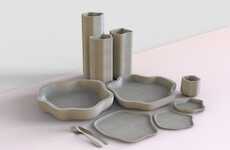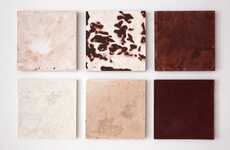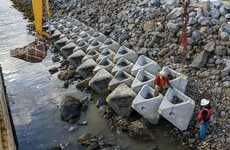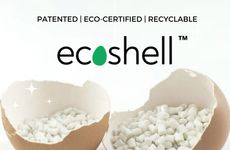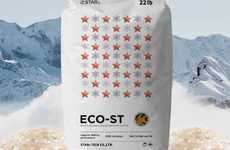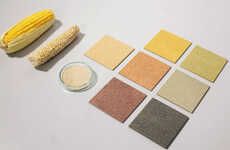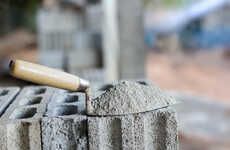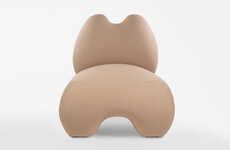
Sea Stone Repurposes Waste from the Seafood and Aquaculture Industries
Laura McQuarrie — August 29, 2020 — Eco
Waste seashells from the seafood and aquaculture industries are given new life with an innovative material called Sea Stone from Newtab-22, which resembles concrete or terrazzo. Sea Stone is made by grinding down shells that would otherwise be headed for the landfill and combining them with non-toxic, natural binding agents.
The concrete-like material helps to make use of the estimated seven million tonnes of seashells that are discarded annually. While many of the salvaged shells are returned to beaches, they are often uncleaned and rotten, causing pollution and unpleasant odors. With Sea Stone, these materials are repurposed in a way that amplifies their value.
As Newtab-22 sees it, Sea Stone has the potential to become a sustainable alternative to concrete in small-scale products, especially since the material shares a similar composition.
Image Credit: Newtab-22
The concrete-like material helps to make use of the estimated seven million tonnes of seashells that are discarded annually. While many of the salvaged shells are returned to beaches, they are often uncleaned and rotten, causing pollution and unpleasant odors. With Sea Stone, these materials are repurposed in a way that amplifies their value.
As Newtab-22 sees it, Sea Stone has the potential to become a sustainable alternative to concrete in small-scale products, especially since the material shares a similar composition.
Image Credit: Newtab-22
Trend Themes
1. Sustainable Materials - Sea Stone demonstrates the trend of repurposing waste materials, opening up opportunities for other industries to develop sustainable alternatives.
2. Circular Economy - Sea Stone embodies the concept of circular economy by recycling discarded seashells, creating a pathway for other industries to implement circular practices.
3. Value Amplification - Sea Stone showcases the trend of creating value from waste, inspiring other industries to find innovative ways to repurpose materials.
Industry Implications
1. Construction - The construction industry can explore the use of Sea Stone as a sustainable alternative to concrete in small-scale projects.
2. Interior Design - The interior design industry can leverage Sea Stone as a unique and eco-friendly material for creating furniture, countertops, and decorative elements.
3. Packaging - The packaging industry can find opportunities in repurposing waste materials like seashells to create sustainable packaging solutions with Sea Stone.
4.5
Score
Popularity
Activity
Freshness


